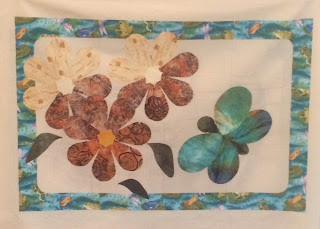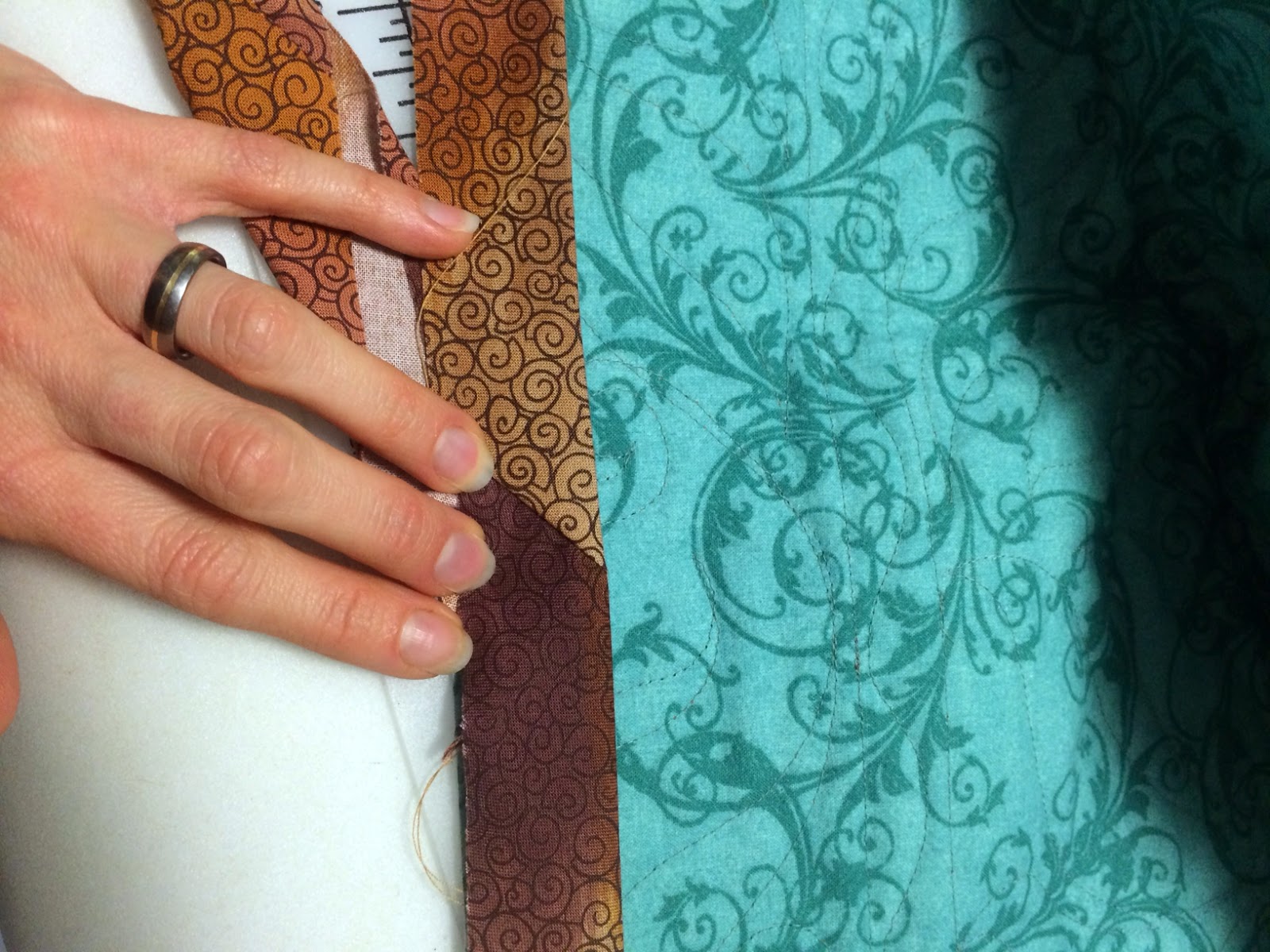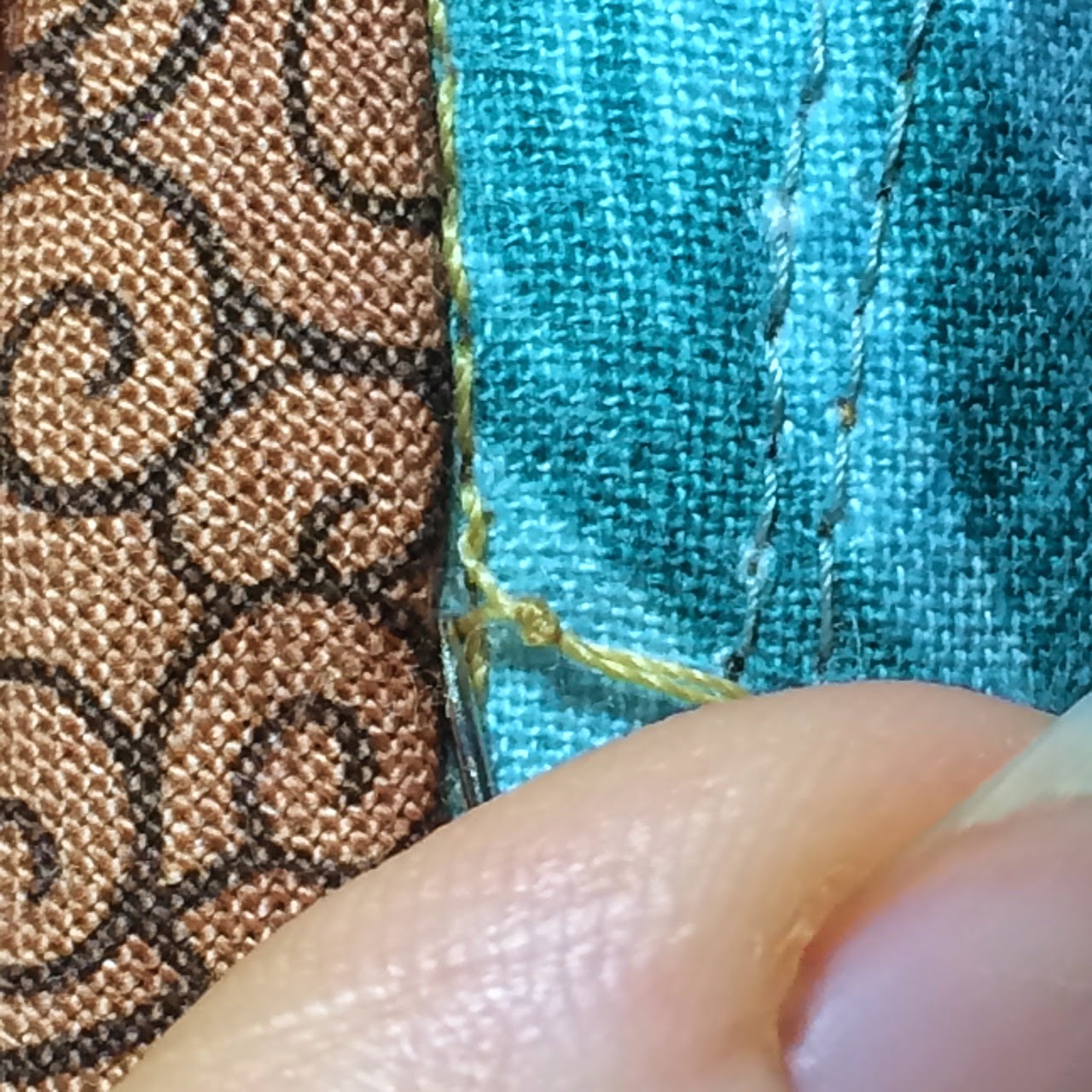If I ever teach a quilting class, this will be my first decree ...
"There is only one rule with quilt-making. 1st - There are no rules with quilting. Anyone who tells you differently is probably trying to sell you a new toy/tool!"
The following is one method of binding quilts. There are many.
Figure out how large a square you need for binding your quilt. In inches, measure the length in total for binding, multiply by the width of your binding strip. Take the square root of the product and add 2". This is your square.
Cut out square and slice it diagonally. Sew the straight edges of the triangle together producing a parallelogram.
Draw strips across your parallelogram parallel to the bias edges, and sew the straight edges together, offsetting them by one strip.
Cut your bias binding along the drawn lines, creating one long continuous strip of fabric.
Iron your bias binding in half, and roll up.
Sew down your bias binding at the edge of your quilt, give yourself 10" or so of unsewn tail.
Corners!
At your first (and all additional) corner, stop sewing a seam width from the edge, and stitch diagonally to the corner.
Fold binding at 45 degree angle away from the quilt ...
And then fold down along the quilt. You've made your first corner, which will wrap around to the other side.
Leave yourself 10" or so of unsewn tail at the end, just like the beginning. Match the two side together at 90 degrees. Pin.
Sew down.
Check to see that you sewed the angle properly together by testing the binding fold.
Cut the excess binding and finish sewing down. Iron.
Wrap binding around to front and pin, then iron down again.
At the corners, you will run into bulk on the back of one side.

Make sure the bulk you create on the front is on the opposite side. In this picture the bulk is to the right in the back, so I will fold the bulk at the front to the left.
Pin down.
SEWING THE CORNERS, BY HAND ... 10 MINUTES TOPS!
Thread a needle, knot the thread, and stick the needle out the top of the corner.
Begin sewing the two edges to each other at the corner ... so it does not come apart later.
Machine stitch down the binding from the front of the quilt. Bury the threads.
Bound front.
From the back. If the stitching on the back bothers you, do not bind a quilt via this method.
All done!







































